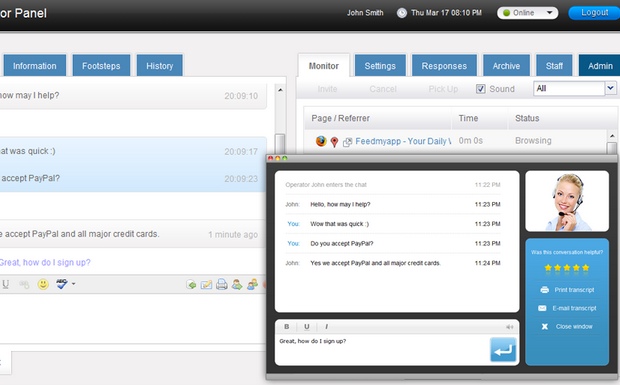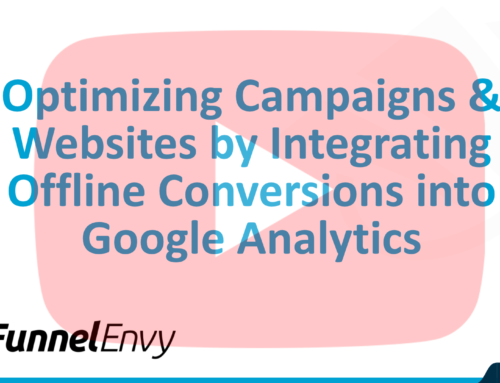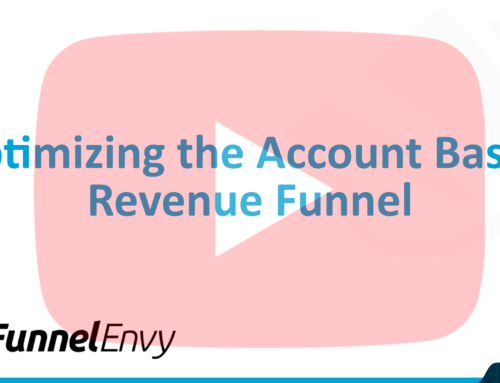We live in a time of unprecedented choice.
From custom TV packages with thousands of channels to creating the perfect station on Pandora, consumers have come to expect plenty of options to suit their unique tastes.
Are you giving users different options to connect with you once they land on your website?
Or are you limiting them to email and online contact forms?
Putting the power of choice in users’ hands – opening up multiple communication channels – can lead to more leads and customers.

Photo Credit: anjan58 via Compfight cc
Why Some Businesses Don’t Give Users Enough Choices
With all the actionable data available online, it’s easy to get caught up in a quest to optimize every piece of website content for conversions.
After all, websites are the perfect portal to reach customers all over the world. They allow you to connect with anyone with an Internet connection. Who wouldn’t want to make the most of that?
Optimizing your website is essential to long-term success. That isn’t the issue. But some businesses focus so much on the content already on their websites they stop thinking about what they’ve left off. They see a contact form and rush to optimize it without ever considering if it’s the best way to connect with users.
That’s where they get themselves into trouble. Overlooking the importance of giving users choices about how to continue the interaction makes their conversions nosedive.
Forcing Users to Contact You Online Results in Missed Opportunities
Just because someone finds you on your website doesn’t mean they’ll want to interact with you there.
You could have sleek, highly optimized contact and email opt-in forms, but they won’t capture every interested visitor. Limiting yourself to generating web leads exclusively results in missed opportunities and sales.
Many users simply won’t reach out online – even if they’re interested in what you have to offer. They’re worried about privacy, spam, and overcrowding their inboxes. Some just prefer other methods to communicate with the people they’d like to do business with.
Opening up Multiple Communication Channels
Making the most of every opportunity – capturing as many interested users as possible and pulling them into your sales funnel – requires you to open up multiple communication channels.
By giving people a choice how to reach you, you make your website more user friendly and can drive more leads and sales. Users get to choose the way to communicate that’s most convenient for them, which makes it easier to connect with you and further the relationship.
Which communication channels should you open up to connect with more users? Here are three important ones to keep in mind:
1. Telephone
If you’re looking to land high quality leads (and who isn’t?), you owe it to yourself to give users the option to contact you over the telephone.
According to a 2010 report from BIA/Kelsey, 65% of Fortune 500 companies believe that the telephone is their highest quality lead source. Leads generated over the phone are between 10 and 15 times more likely to convert than web leads.
Even as the Internet matures, many users still want to talk to actual people before considering doing business with them. Nearly 60% of online shoppers call to ask about a product before purchasing it. Improving mobile phone technology only encourages this; it’s simple to go from searching for information on a smartphone to calling the business to find out more.
Most users won’t call you, but that’s beside the point. Just having a phone number displayed on your website creates a strong consumer trust signal. It says you’re more than just a scammer or fly by night operation.
Users who do call will provide invaluable feedback ranging from product ideas to how to improve customer service. There’s no substitute for speaking to customers directly and hearing them voice concerns in their unique language.
There are also several exciting software developments that can help make your telephone lead generation strategy more powerful than ever before.
Call Tracking
It used to be impossible to measure and track leads generated over the telephone. Businesses didn’t have the technology available to find out which ad campaigns were responsible for which calls.
![]()
Image Credit: Evidence Based Marketing
Call tracking software has changed that. This software helps you determine which advertising efforts are generating telephone leads (and which aren’t). You can allocate your limited budget more effectively, focusing on profitable channels and abandoning unsuccessful campaigns.
Each ad campaign is assigned a unique phone number. The software tracks the number of incoming calls associated with each number. Depending on the available features of the particular software, it can also integrate lead data into a CRM, organize a scheduled follow up, and even record the phone conversations.
In a series of case studies, TopSpot Internet Marketing found that three B2B clients using call tracking increased their conversions by over 300%.
Click-to-Call
Click-to-call makes it easier for users to get in touch with you. When someone clicks on a specific button, image or text, click-to-call starts a real-time conversation with the business over the phone.
Mobile traffic continues to account for a larger percentage of total Internet traffic. As mobile becomes an essential lead generation channel, click-to-call will only become more valuable for the businesses using it.
Here’s how. Say a user is searching for information on their smartphone. They land on your website, which gives them some valuable information, but also raises a few new questions. It’s simple to hit the click-to-call button and get in touch with you on the phone. This happens instantly, while their interest is still high and without them having to navigate your website to find your phone number.
According to a survey from Google and Ipsos, 42% of the participants had already used click-to-call in search. And 94% of smartphone users said they needed to call a business directly while searching for information… whether click-to-call was available or not. So there’s a huge opportunity to implement this and make it easier for users to get in touch with you. Businesses that don’t offer click-to-call may miss out on these opportunities going forward.
In a comprehensive 2010 study, Forrester Research found that click-to-call created an average ROI of 304% for ecommerce businesses over a 3-year period.
2. Live Chat
Live chat software offers users another interesting way to get in touch with you. This technology gives users the ability to start a real-time conversation with someone on your team at the click of a button, link, or tab. If the user does this during “off hours” (when no one from your team is available), the software allows them to leave a message and a rep can get back to them during business hours.

Image Credit: ManageWP Blog
A study from ATG Global Consumer Trend found that over 90% of consumers think live chat is helpful. eMarketer reported on a study that found 63% of the participants were more likely to return to a website that offered live chat. And almost 40% said they had made a purchase due specifically to a live chat session.
This technology doesn’t just make things easier for your users; it also makes your team more efficient. There are less phone expenses to deal with if users have the option to chat in real-time. Because a single chat rep can multitask – fielding multiple chats at once – waits for live chat support are often much shorter than phone queues. Users can also multitask during the wait, and they don’t have to navigate a 1-800 number to get in touch.
Wells Fargo started using live chat way back in 2002. By 2008, they’d used it to improve customer satisfaction and achieve a double-digit percentage increase in conversions. Virgin Airlines uses live chat to target users already in the process of buying airline tickets for strategic up-sell opportunities. They’ve increased the average order value for those customers by 15%.
3. Physical Address
If your business relies on people stopping by your physical location to drive sales, including a physical address (ideally, with a map) on your website is essential.
Even if you aren’t relying on users visiting you in person, including a physical address opens up another communication channel and can help you make sales.
Why? Because providing a physical address creates another trust signal. Users don’t interact with your physical address in the sense that they don’t visit your office, but just knowing a physical office exists eases concerns about you being a scammer or untrustworthy business.
Give Users What They Want and Attract More Leads
The recipe for high conversions online starts with making your website as attractive and user friendly as possible.
But it doesn’t end there.
Getting users onto your platform is just the first step. Taking control out of their hands at that stage (by limiting their options to contact you) leads to missed opportunities.
You can give users the choices and convenience they appreciate. Open up multiple paths for users to connect with you – and continue to optimize those paths as part of your overall CRO strategy – and you’ll generate more leads and sales.
Where do your highest quality leads come from? Your website? Over the phone? In person? Leave a comment below and let me know.





